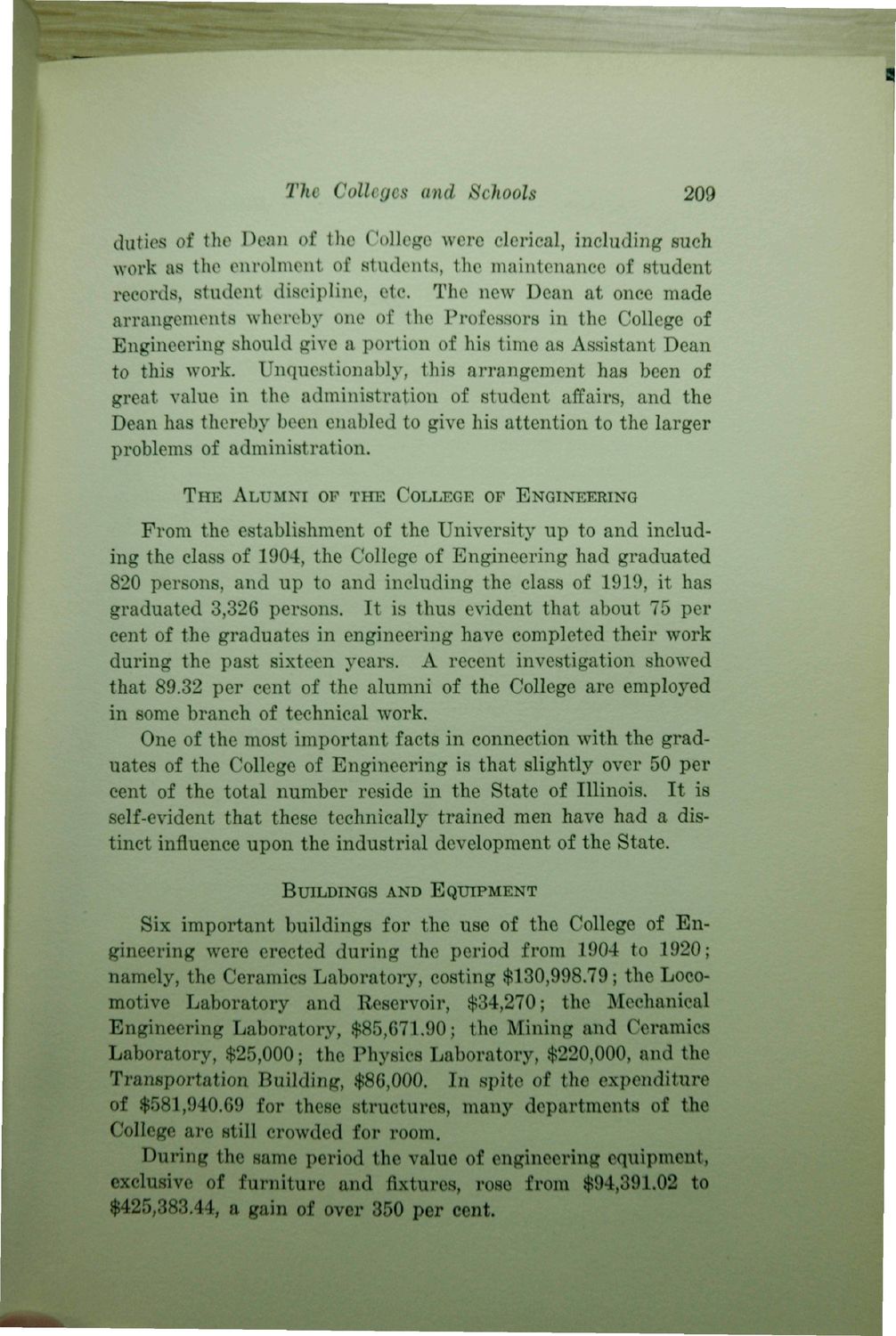| |
| |
Caption: Book - 16 Years (Edmund James)
This is a reduced-resolution page image for fast online browsing.

EXTRACTED TEXT FROM PAGE:
The Colleges and Schools 209 duties of the Dean of the College were clerical, including such work as the enrolment of students, the maintenance of student records, student discipline, etc. The new Dean at once made arrangements whereby one of the Professors in the College of Engineering should give a portion of his time as Assistant Dean to this work. Unquestionably, this arrangement has been of great value in the administration of student affairs, and the Dean has thereby been enabled to give his attention to the larger problems of administration. THE ALUMNI OP THE COLLEGE OP ENGINEERING Prom the establishment of the University up to and including the class of 1904, the College of Engineering had graduated 820 persons, and up to and including the class of 1919, it has graduated 3,326 persons. It is thus evident that about 75 per cent of the graduates in engineering have completed their work during the past sixteen years. A recent investigation showed that 89.32 per cent of the alumni of the College are employed in some branch of technical work. One of the most important facts in connection with the graduates of the College of Engineering is that slightly over 50 per cent of the total number reside in the State of Illinois. It is self-evident that these technically trained men have had a distinct influence upon the industrial development of the State. BUILDINGS AND EQUIPMENT Six important buildings for the use of the College of Engineering were erected during the period from 1904 to 1920; namely, the Ceramics Laboratory, costing $130,998.79; the Locomotive Laboratory and Reservoir, $34,270; the Mechanical Engineering Laboratory, $85,671,90; the Mining and Ceramics Laboratory, $25,000; the Physics Laboratory, $220,000, and the Transportation Building, $86,000. In spite of the expenditure of $581,940.69 for these structures, many departments of the College are still crowded for room. During the same period the value of engineering equipment, exclusive of furniture and fixtures, rose from $94,391.02 to $425,383.44, a gain of over 350 per cent
| |